Gun Powder aka dOsa MiLagAi PoDi
My husband, who was about to head out for his several month long trip to the US, said he wanted to purchase dOsa MiLagAi poDi (for non Indians – dOsa is a traditional savoury vegan South Indian crepe, miLagAi refers to dried red chillies and poDi means powder). I told him I would make him a batch. He said he would take what I had at home already and buy more outside. That is what he did. His plan was to make rava idlis from a ready mix and just eat it with MiLagAi poDi.
My son, who stayed with him, reported after father had made the first batch of idlis. “Amma, we first had that store bought powder. It was so bad. When appa said he had brought some of yours, I asked him to give me that. The store-bought was just not good enough.” Mine is actually just what my mother makes – unchanged and unaltered. I could not make any comparison though, never having had store bought poDi ever.
It was only recently that I realised this poDi has appeal and applicability beyond South Indians. My daughter and I were at a noodle joint where there was only one other customer. That lady hesitantly approached me at the end of her meal. “I am visiting from Delhi and I am heading home today evening. I would like to buy gun powder. Where can I get good gun powder near here?” My daughter’s eyes practically popped out of her sockets – was her mother an arms dealer on the sly? She did not know, until then, that this poDi, a mainstay in many South Indian homes, was often referred to as gun powder by North Indians or that it was something people craved for. As is frequently the case, we often do not value what is always around.
My mother would say that a home should never be without it. One could do without chutney or sambhar but poDi must always be there. However, I went for two decades without it for we preferred sambhar and chutney. My husband switched to poDi only when he had to cook for himself. 🙂 Since then, he takes poDi with him and I am never without it where I am either.
Yesterday, I made a fresh batch. My son asked me to document it carefully and put it here. He is a most loyal user of the recipe section and my biggest and best critic too. The process is very simple, and made even simpler if one has a large oven which can make short, unsupervised, work of the roasting of the ingredients.
I have found that every family has a version of this poDi – with some minor differences, often with proportions, and sometimes with seasonings. This one here is neither bland nor uber spicy – it DOES offer a kick but a reasonable one. If you like it really fiery, add an extra 1/2 cup of chillies. If you like it milder, reduce chillies by 1/2 cup. Everything else can stay the same.
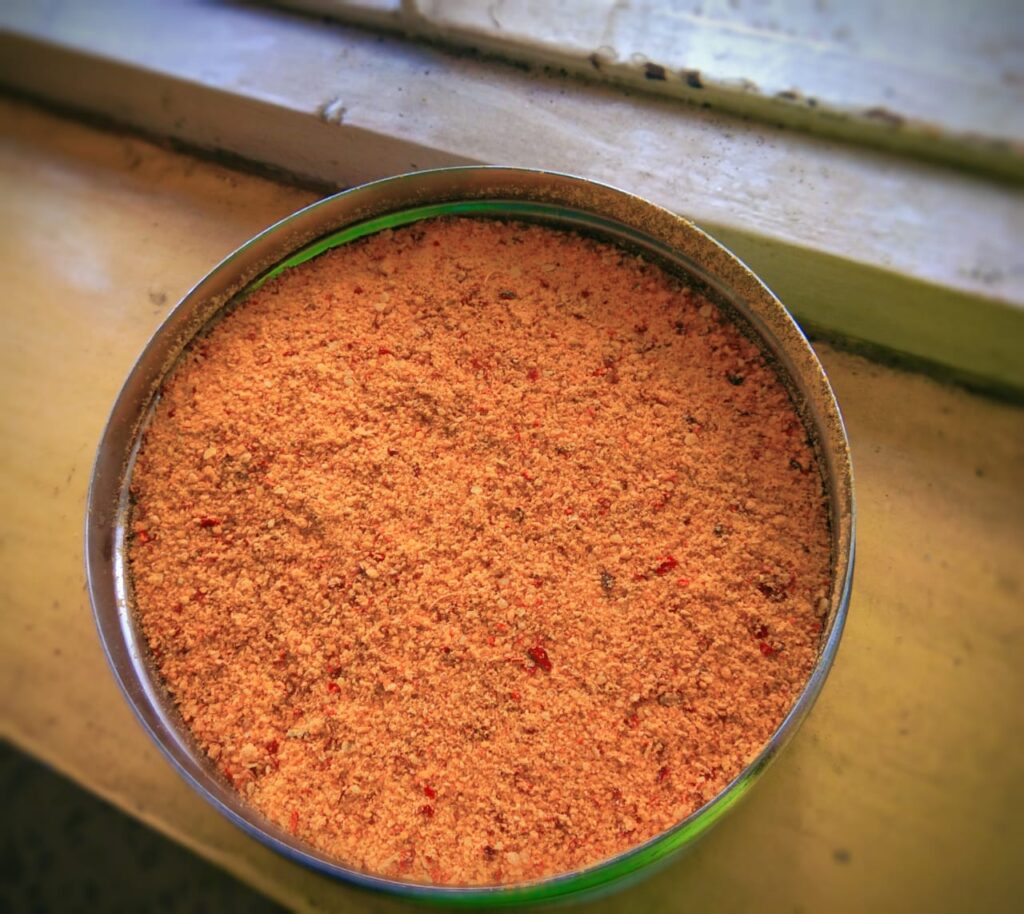
Ingredients: (A cup here is 8oz, a tsp is 5 ml and a tbsp is 15 ml)
1 cup chana dhal (split, skinned garbanzo beans)
1 cup white urad dhal (skinned matpe beans)
1 1/2 cups dried red chillies (I prefer the round variety but any spicy variety can be used)
2 tbsp white sesame seeds, soaked in water for about ten minutes and drained
1/2 tsp equivalent of solid asafoetida
2 small bits of solid tamarind (equivalent of two seeds worth) – paste CANNOT be substituted here
1 1/2 tbsp jaggery (brown sugar can be substituted)
2 tsp salt
3 tsp oil, ideally gingelly (raw sesame)
Method:
Each ingredient has to be individually roasted since they are of different sizes and thicknesses and even roasting is required for the powder’s correct taste. The tamarind adds just the tad of required piquancy to balance the flavours. To ensure it does not clump up due to the moisture, I roast the tamarind multiple times – with each dhal and with the chillies too – this allows it to dry completely and get powdered homogeneously with everything else.
Roast each dhal individually on low to medium heat in a kadAi (wok) with a teaspoon of oil until golden brown – stir regularly. This CAN be done in a pre-heated 350 degree F oven – if using an oven (NOT a microwave), rub that teaspoon of oil evenly with the dhal, arrange in a single layer and bake until golden brown – monitor regularly and check the time required in your specific oven for future reference. Use your sense to smell too – the correct roast is one where you smell a lovely aroma of roasted dhals with no indication of burning – burnt dhal is quite unpalatable.
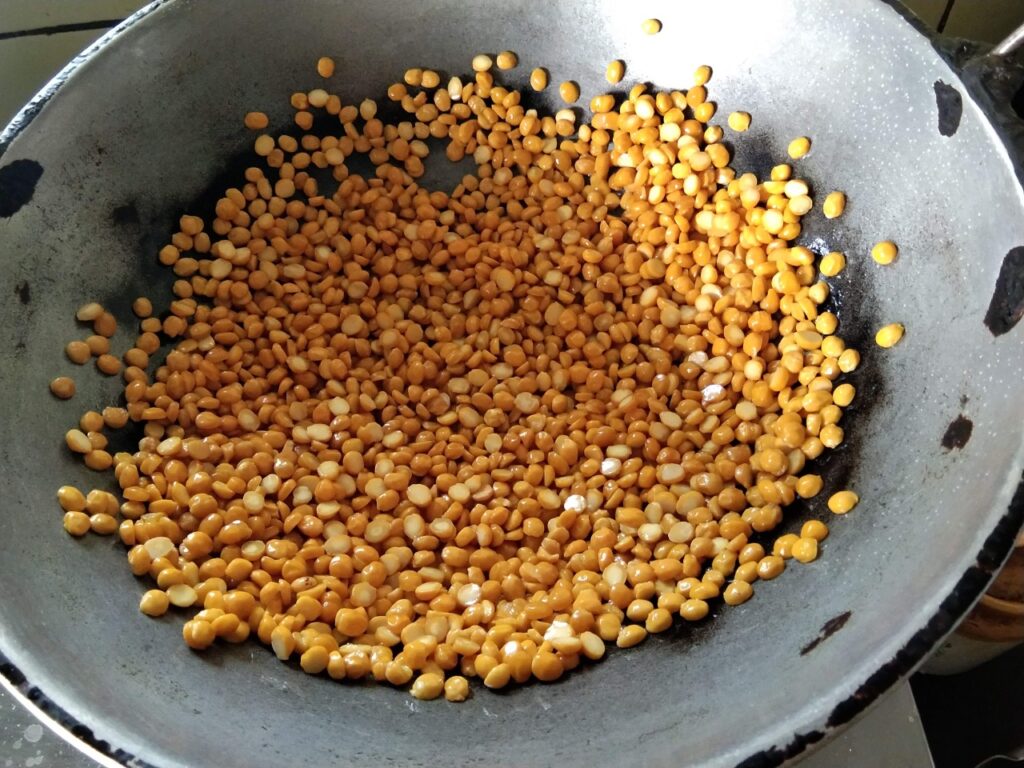
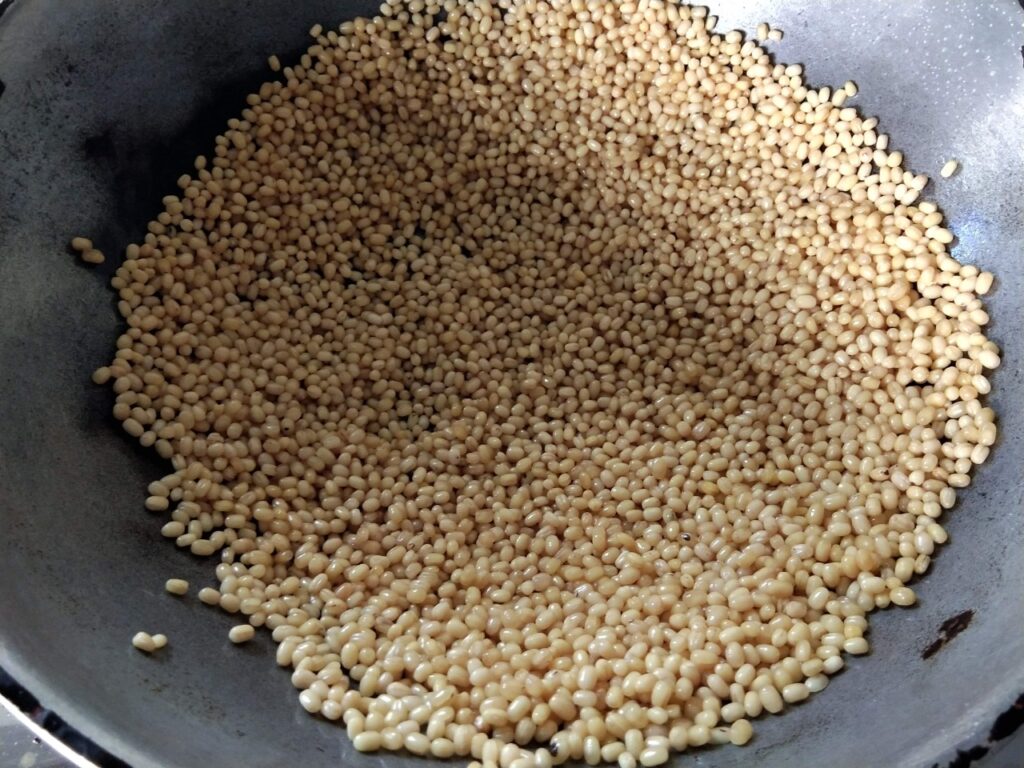
Using 1/2 a tsp of oil, roast the red chillies stirring until the chillies plump up slightly – this should take barely a minute or two.
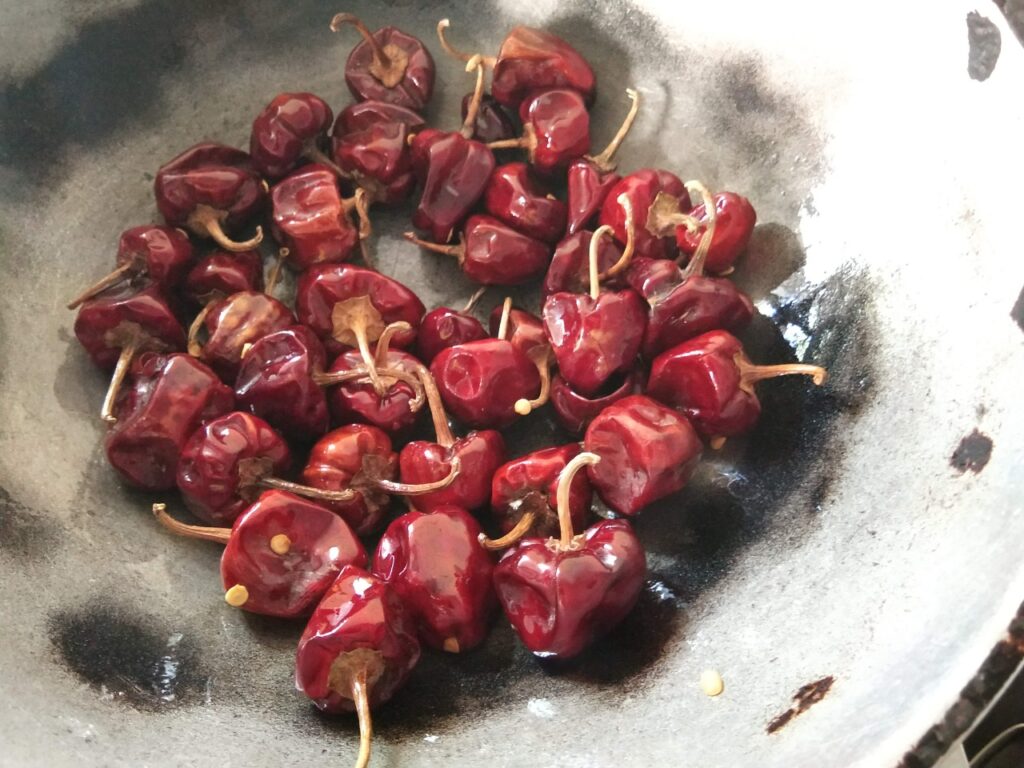
Toast the sesame seeds dry (add no oil) in a wok – do not put this in the oven – stir all the while until you hear a lot of steady crackling sounds – the seeds will look practically alive, hopping a little bit around the kadAi.

Fry the solid asafoetida in the remaining 1/2 tsp oil and drain out the oil.
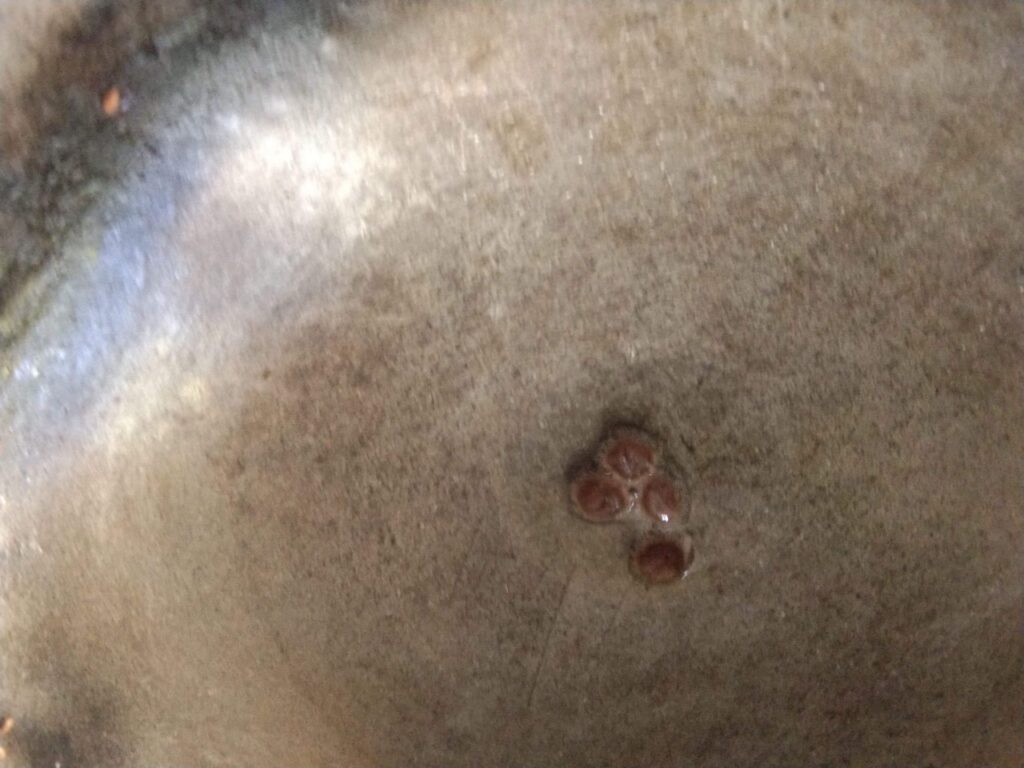
Let all the ingredients cool. Add the jaggery and the salt and powder in batches in a dry blender, or coffee grinder attachment, to a somewhat coarse consistency – the correct one is where it does not look very coarse to the eye but is rather sandy and rough to the touch. Mix well. Yields approximately 3 1/2 cups of poDi.

To serve, put a couple of teaspoons of the powder on the plate. The user usually digs a well in the centre of the powder into which one pours some oil into it – traditionally gingelly oil – and then mixes to a consistency that one can dip one’s idlis and dOsas into.
Do share feedback on how you like this version of the ubiquitous South Indian condiment. Enjoy!
Wow…..Feeling hungry after reading through this. Excellent write up. Wonderful Photographs. Thank you for writing it up. It reminded me of some of the other household terminologies like “MOla-podi”, “Idli Podi”, Vara-mola Podi….
Hats off and Kudos.
Thank you, Sir. Indeed. So many synonyms.
Love the detailed recipe, Lakshmi. I’ll try it out when I’m back in the US. Vinayagam has my mom’s recipe and he gets it made for me regularly. You are so thorough. It’s a delight.
How nice! I wouldn’t be surprised if the recipes were similar. Do share when you get a chance. And please let me know how you like this recipe when you do make it.
Enjoyed the gun powder conversation and even I would have been shocked if someone asked for one the place to get some (may be avadi gun factory?😃). I liked the wording “the user normally digs a well in the center” 😀 which takes me back to my childhood days. During our childhood my father would make us sit in a circle and ask each us to dig a small well in the center of the idlies served already and he would put gingelly oil . It used to taste heavenly. Now at home though my wife makes wonderful dosa and podi, she never makes idly. Thanks
My maternal grandfather would do the same, my mother would say. We were talking about how we are often so fat queasy these days when then, people used the necessary fats for taste. Food was home made but not diet food – allowing for a combination of health and taste without extremes. Thank you for sharing your experience.
Nothing beats homemade molaga podi. Even I used to prefer sambhar and chutney at one point, but molaga podi reminds me of childhood, and a good molaga podi with nalennai is unbeatable! Will try out this recipe! Few questions:
1. Can you use powdered hing?
2. When baking in oven, can you put all the ingredients at once?
3. What do you mean by grinding in batches? All ingredients get ground together right?
Do try and let me know. Answers below:
1. Powdered hing can be used but it would really be better to use the solid version – it IS available abroad too these days easily. The flavour, in my opinion, is definitely more pronounced in the solid version – obviously also allowing for proper frying.
2. Whether baking or roasting, ingredients HAVE to be prepared individually – as I mention, they are all of different sizes, so will have different roasting times.
3. For the quantity I have given, you cannot dump everything together to grind all at once – you can mix the ingredients and grind in instalments ensuring there is room to move in the blender jar.
Hope that helps.